| It Would Be Good To Photograph Brown Bears In The Snow | ||||
|
Over the past few years, I have visited Finland twice to photograph the European Brown bears, these were in June 2010 and June 2014. I have visited during February and march during several other years were the photograph targets have been mainly birds. During all but one of these visits i was with my friend Danny Green, and we would often chat about various subjects and locations that might be a good location for a future visit. Like many wildlife photographers we enjoy the winter weather including both the challenge and the results that can be achieved in winter conditions. On many occassions we had both said how "it would be good to photograph European Brown Bears in the snow" when they emerge from hibernation. Therefore a few months ago, Danny and myself booked our flights to Finland so that we could spend the first 12 days of April trying to get some images of the bears in the snow. It felt like an excellent opportunity that would fit well with my growing collection of images from the Boreal forest and the surrounding sub Arctic wilderness region. |
||||
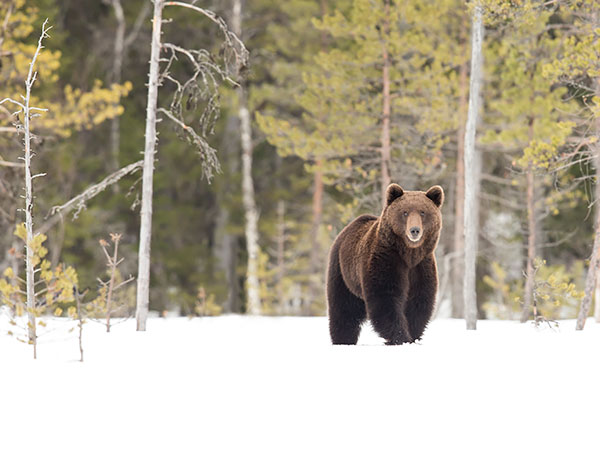 |
||||
|
The date that bears leave their hibernation can vary a lot each year and is far from an exact science, as a result one of the biggest challenges is knowing when to visit. The best dates can vary from the end of March through to the end of April and is very dependant on a number of factors including weather, tempreture, the ammount of snow in the area, and conditions in the bears den. We particularly wanted to photograph the bears in their long winter coats whilst walking in a lovely white snowy setting. If you visit to early the bears are still in hibernation - visit to late and the snow has gone and everywhere is covered in mud and the setting is not at all photgenic. In an ideal world, it would be good to spend a month or more in the area photographing a number of species and then try and time the visit to the bears to the best few days. But with annual leave, booking of flights, the cost of nights in the bear hide, etc. this is obviously not an easy or practical option. |
||||
| We decided on a 12 day visit and booked our flights, the visit was planned to include a few other locations and species as well as bears. (a few of the other species we photographed including three species from the grouse family in one day are covered in my previous blog post.) | ||||
|
I arrived in Finland on 31st March, we collected a hire car from the airport and drove North East towards the Finnish and Russian border where the hides are situated in the remote targa forest. It was snowing hard as April approached, this year winter was only slowly giving way to spring, as we wondered if we had planned our visit to early. But by the time we arrived at the accomadation and had settled in we were eager to get to the hides and hopefully start seeing and getting images of bears. Normally the route from the accomadation to the hides is a short drive followed by a walk for a few hundred meters. But all but the main roads were still full of sdnow and there was no way that anyone could drive along them. The walking was also not practical because the snow was still over a metre in depth and you sink as soon as you step of any of the paths. As a result the only way to get to the hides was a 30 minute snowmobile ride which took us right up to the hide door, which was obviously very welcome and involved virtually no physical effort. |
||||
 |
||||
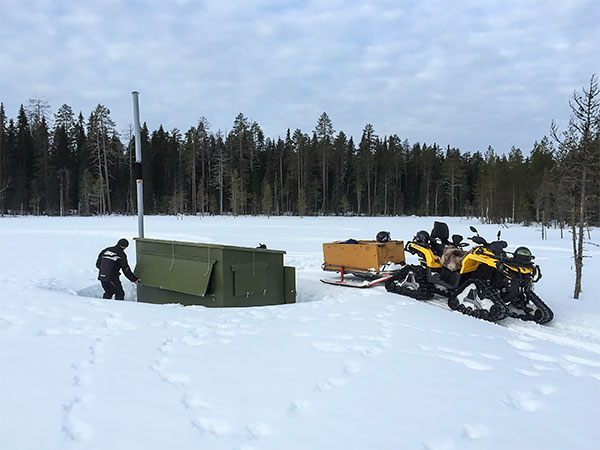 |
||||
|
|
||||
| On the way, we passed a few bear footprints in the snow which obviously helped lift our expectations. The snow was deep, and did not yet have many pine neddles from the forest or mud from the bears walking, the conditions were very good for photography. All we needed was some bears ...... | ||||
|
||||
|
The hides are very comfortable and we saw a variety of great wildlife including Ravens and White Tailed Eagles many of which came within a reasonable photographic range and a few images were achievied. But the daylight gradually disappeared as the sun dipped over the horizon and it became to dark for photography and so far we had not seen any bears. We got back onto the snowmobiles and returned to the accomadation where we heard that there had been a few bears in the area. The centre has some remote camera traps that they were using to track the bears movements in the area and there was plently of evedence that a few bears had left hibernation and were wandering around the forest looking for food. |
||||
 |
||||
|
The same routine went on for several days, the bears were visiting after dark and we began to think that we were going to miss the chance to get any images. But on our penultimate evening in the bear hide we were quietly chatting when we saw a male bear which was about 2 to three years old. He was walking a few hundred metres away, we imediately stopped talking and took up position behind our lenses hoping the bear would walk towards us and pass within photographic range. Luckily for use it did and we managed to get a few images before it ran off. 30 minutes later the bear returned and passed through again and we managed a few more images. |
||||
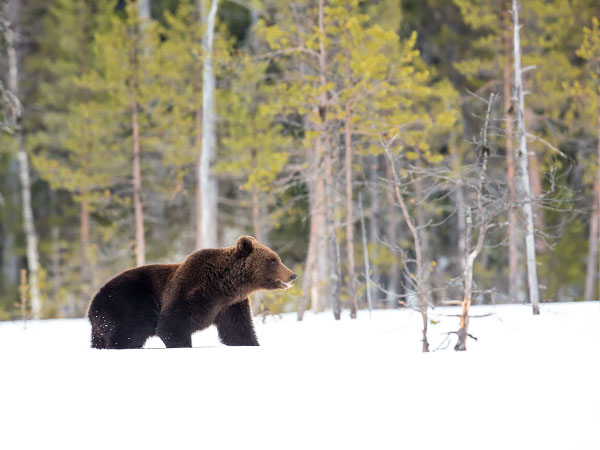 |
||||
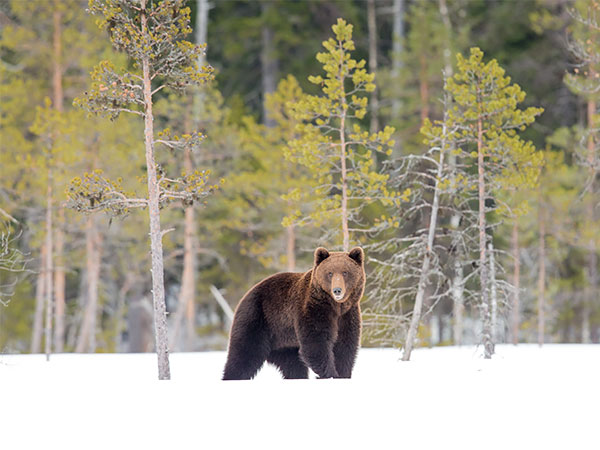 |
||||
 |
||||
 |
||||
 |
||||
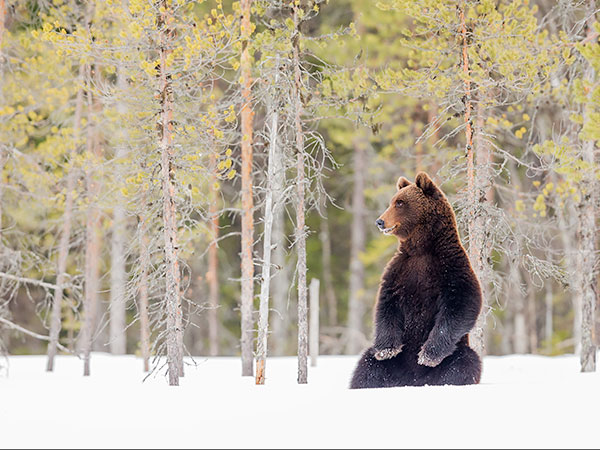 |
||||


